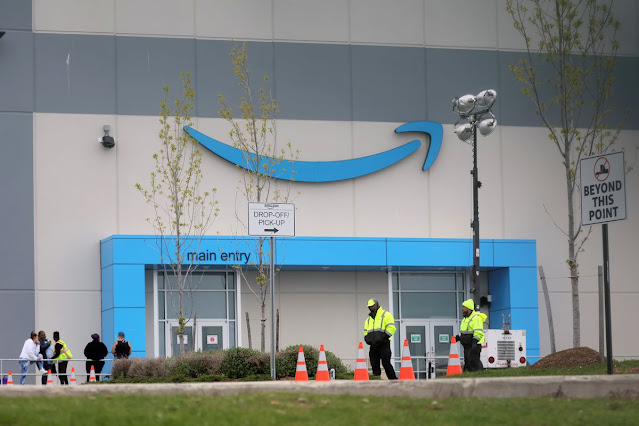Hiring cooled slightly in December, capping a year when employers added 4.5 million jobs, the second strongest on records back to 1940.
Hiring had been resilient throughout 2022 despite an economy that is slowing alongside the Federal Reserve’s aggressive pace of interest rate increases aimed at bringing down inflation. However, some recent data and a wave of tech and finance industry layoffs suggest the labor market, while still vibrant, may be starting to lose momentum and gains could reverse in the year ahead.
Employers added 4.3 million jobs in the first 11 months of 2022, the second-highest January-through-November total on record after 2021 when the labor market rebounded from the pandemic-induced shutdowns and added 6.2 million jobs.
Economists surveyed by The Wall Street Journal estimate the economy added 200,000 jobs in December. That would be a slowdown from an increase of 263,000 in November.
Payrolls increased by an average of 272,000 jobs a month in the three months that ended in November, down from 539,000 in the first three months of 2022, but still above the 2019 average of 164,000 a month. The unemployment rate held at 3.7% in November, low by historical standards.
The slowdown is more pronounced in certain industries: Tech companies cut more jobs in 2022 than they did at the height of the Covid-19 pandemic. On Wednesday, Salesforce Inc. said it would cut 10% of its workforce, unwinding a hiring spree from the pandemic. The Wall Street Journal reported that Amazon.com Inc. would lay off 18,000 people, roughly 1.2% of its total workforce. Other companies, such as Facebook parent Meta Platforms Inc., DoorDash Inc., and Snap Inc. have also recently cut positions.
Companies in the interest-rate-sensitive housing and finance sectors, including Redfin Corp., Morgan Stanley, and Goldman Sachs, have also moved to reduce staff.
Still, employers in many sectors struggled to fill open positions, pushing up wages. Average hourly earnings were up 5.1% in November from a year earlier, well above pre-pandemic growth trends of around 3%.
The continuing effects of the economy’s bounce-back following Covid-19 lockdowns, a wave of retirements early in the pandemic and strong household spending have pushed up employer demand for workers—and paychecks—when those workers are scarce. This year could be more challenging for the labor market as the economy absorbs the impact of slowing global growth and the lagged effect of higher interest rates. Economists surveyed by The Wall Street Journal last fall saw a 63% probability of a U.S. recession in 2023. They also see the unemployment rate rising to 4.7% by December 2023.
“We’ve obviously been in a situation over the past few months where employment growth has been holding up surprisingly well and is slowing very gradually,” said Andrew Hunter, senior U.S. economist at Capital Economics. “There are starting to be a few signs that we’re maybe starting to see a bit more of a sharp deterioration.”
Max Rottersman, a 61-year-old independent software developer said he had been very busy with consulting jobs during much of the pandemic. But that changed over the summer when work suddenly dried up.
“I’m very curious to see whether I’m in high demand in the next few months or whether—what I sort of expect will happen—there will be tons of firing,” he said.
The convulsions in the tech industry have had little effect so far on aggregate economic data. The tech-heavy information sector makes up only about 2% of the 154 million workers on U.S. payrolls. By contrast, about 10% are employed in leisure and hospitality, including restaurants, and 14% work in government.
Despite the recent signs of cooling, the labor market remains exceptionally strong. On Wednesday, the Labor Department reported that there were 10.5 million job openings at the end of November, unchanged from October.
That is a concern for the Fed, which wants to see a faster cooling in the labor market as it battles high inflation. Officials have been particularly worried about wage increases since big pay rises could put upward pressure on consumer prices.
“We believe you need to see a better balancing of supply and demand in the labor market,” Fed Chairman Jerome Powell told reporters following the Fed’s December meeting. “Wages are running well above what would be consistent with 2% inflation.”
Fed officials have raised interest rates at each of their past seven meetings and have promised more rate increases in 2023.
“Hiring has been pretty resilient in the face of persistent Fed rate hikes and a desire by the Fed to slow down the labor market,” said Michael Gapen, head of U.S. economics at Bank of America. “There’s a lot of jobs out there that remain to be filled and it seems like it’s translating into strong hiring.”
Some of those open jobs are at Caleb Rice’s home-renovation business in Calhoun, Tenn., which has been consistently busy since the start of the pandemic. The small company has raised pay and gone to a four-day week in an effort to hold on to workers.
“If I could get three more skilled hands right now, I’d be comfortable,” Mr. Rice said. “The way it goes is I’ll hire five, two will show up and of those two one won’t be worth a flip.”

